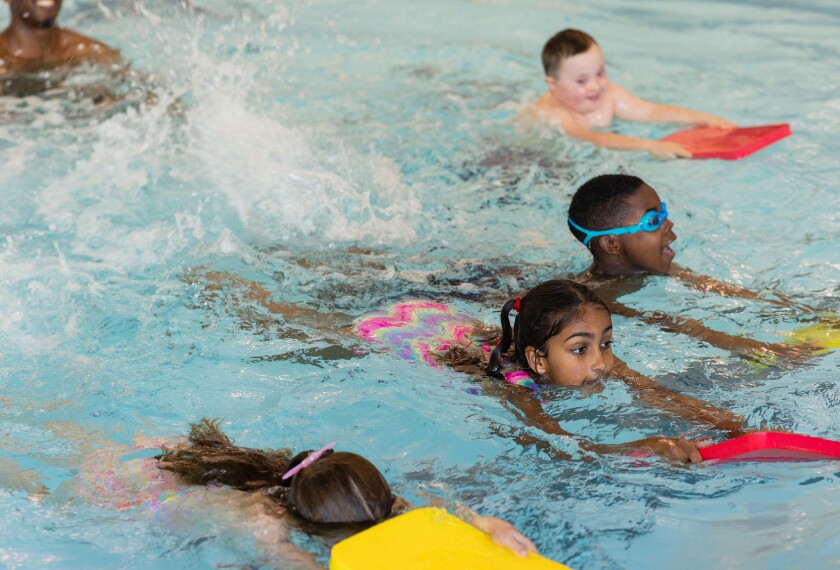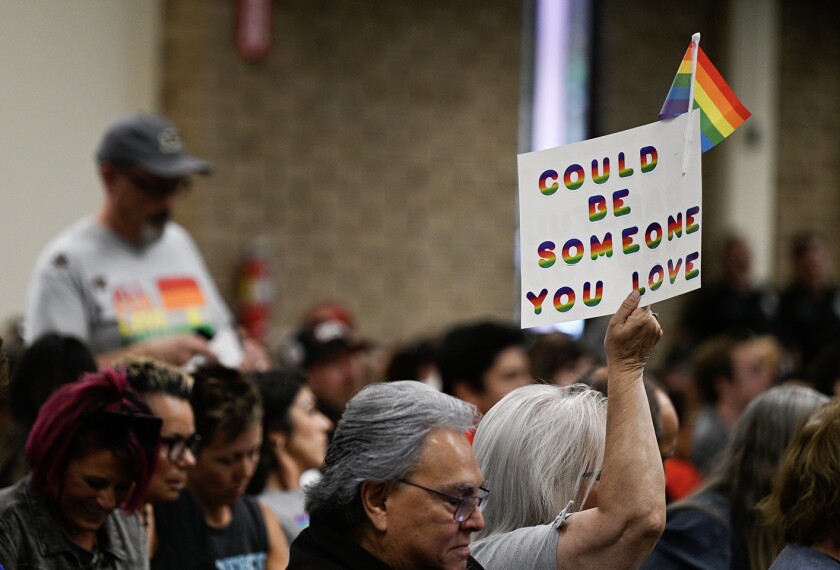Kambar Koshaba, the principal of South County High School in Lorton, Va., wasn’t feeling quite like himself this February.
“My mood was deflated. The things that I usually find joy in, I wasn’t anymore. That’s when I looked at my calendar and realized that my schedule was full of meetings with adults,” Koshaba said during an Education Week K-12 Essentials online forum last week.
Koshaba quickly changed that. He built time into his calendar to spend the lunch hour with students in creative ways—playing UNO, weightlifting, doing toe-touches—so he could interact with them when they are most relaxed.
“You can have meaningful conversations when you go to them,” Koshaba told other school leaders during the session, adding that he schedules bonding time with students like he would an administrative meeting.
The principal’s role has become more complex and demanding in the last few years. Competing demands can quickly fill up their schedules without leaving any time to connect with students and teachers in a meaningful way, Koshaba said.
Principals need to be conscious about how they are spending their time to avoid burning out. Koshaba shared three strategies from his own experience that can help. His full remarks are shared in the video above.
Create pockets of time to interact with students
Koshaba recommends scheduling every activity, including the fun ones. For instance, a lunchtime activity with students has equal footing in his calendar as a disciplinary meeting with a parent.
Interacting with students gives Koshaba joy and insights on how connected they feel to their classes and the school.
Koshaba’s informal data collection doesn’t end with weightlifting competitions, though. A few times every week, he rolls out his “mobile office”—a laptop perched on a cart—to roam the corridors and speak with students and teachers. Koshaba said this makes him more accessible to his school community.
Once a month, he also brings a whiteboard and markers on his rounds to pose questions like “Do you feel a sense of belonging in school?” to students. “Students write their answers on the whiteboard, which I then share with my staff and parents, too,” Koshaba said.
The trickle-up effect of low teacher morale
Principals and teachers differ on their assessment of teacher morale. In a pair of nationally representative surveys conducted by the EdWeek Research Center last fall, 49 percent of teachers indicated that their morale was worse than in the previous year, while only 26 percent of school leaders thought teacher morale had worsened.
Koshaba said it’s crucial to pay attention to warning signs of dipping morale because when teachers burn out, it can hurt principal morale, too. For new teachers, low morale is cyclical—they are often excited and energetic at the beginning of the school year but tire out toward the end of the semester.
At South County, the sluggish months tend to be November and March, said Koshaba. To keep teacher morale up, Koshaba works with students to send their teachers appreciation cards and messages. He also gets parents involved by asking them to send encouraging emails to teachers. Koshaba tries to keep the teacher workload light during these periods—fewer professional development and faculty meetings give teachers more time to work on assessments or connect with students.
In addition to these strategies, Koshaba has established “Cookies with Koshaba,” a 15-minute window for any staff member who wants to talk about personal or professional challenges over Chick-fil-A cookies. “It’s not about the cookies, though food is always welcome,” Koshaba said, laughing. “It’s about the one-on-one time I can give them.”
There is a limit to how much time a school leader can spend having these conversations. Doing this for an entire day could lead to burnout, Koshaba warned other school leaders. He’s now reduced the frequency to two half-days every nine weeks.
In the new school year, schedule your joy
Principals must be intentional about making time for themselves—“schedule your joy,” Koshaba said, adding it’s the only way principals can rejuvenate themselves. Even on Saturdays, Koshaba said he updates his calendar with activities as simple as reading a book or going to the gym.
Koshaba also encouraged his principal colleagues to schedule short vacations over three-day weekends instead of waiting to take a long break.
“When you schedule your joy, you have something to look forward to,” he said. “That really helps morale.”
Disclaimer: The copyright of this article belongs to the original author. Reposting this article is solely for the purpose of information dissemination and does not constitute any investment advice. If there is any infringement, please contact us immediately. We will make corrections or deletions as necessary. Thank you.







